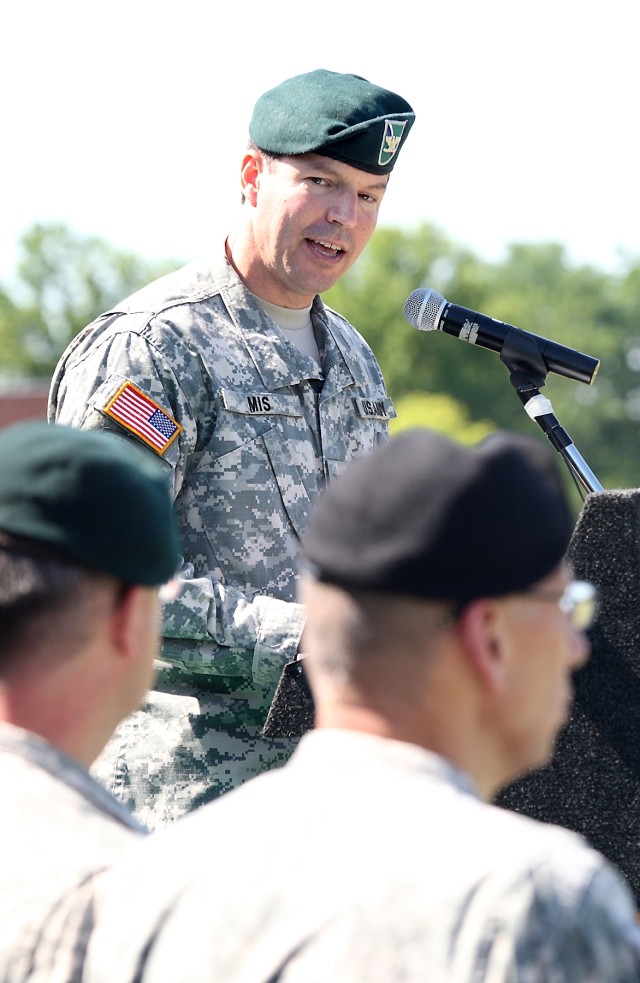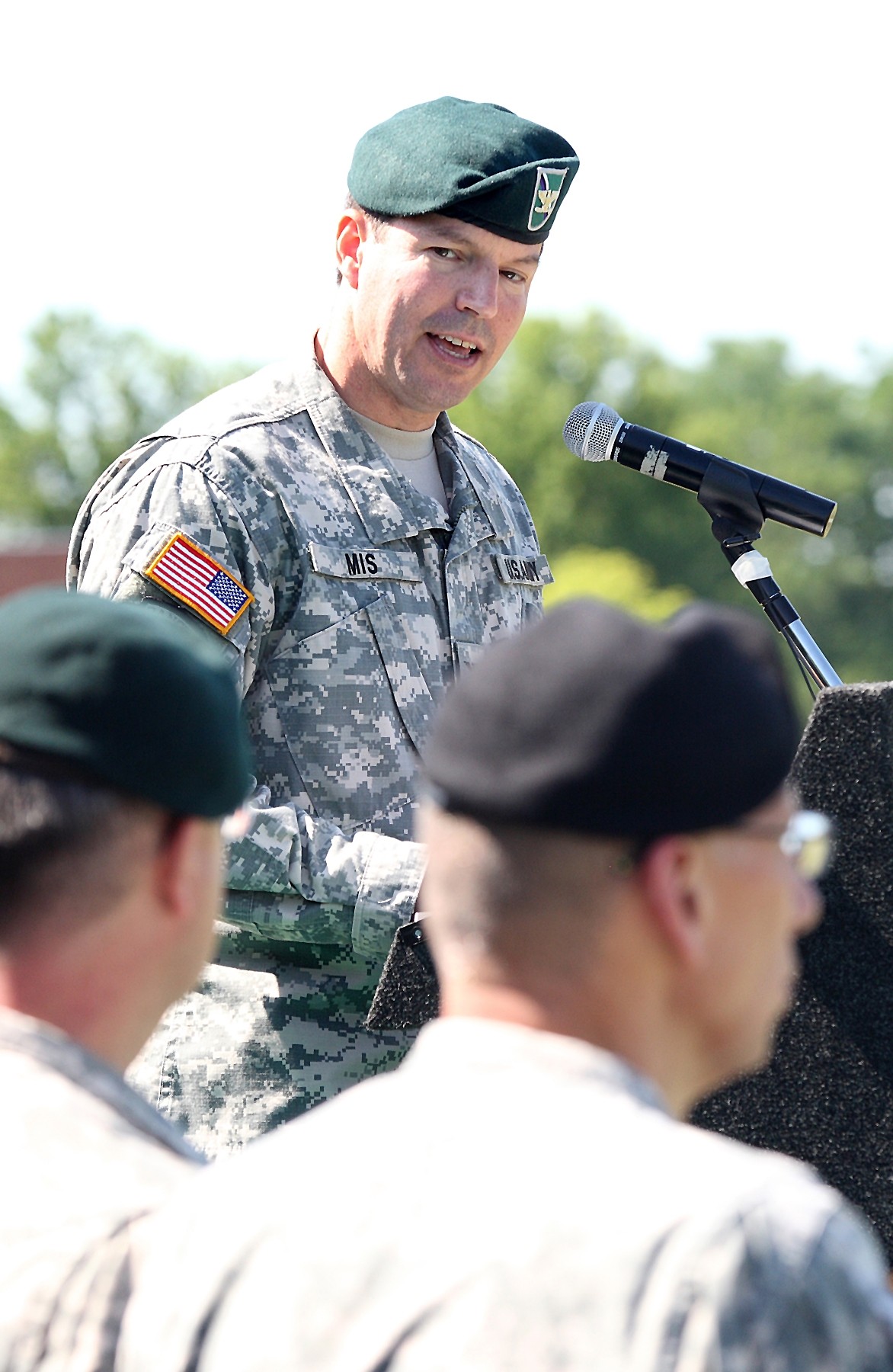FORT MEADE, Md. -- When Col. Robert Shaw took responsibility of the newly formed Asymmetric Warfare Group a few years ago, his command consisted pretty much of himself, a condemned jail for his headquarters and a mission to affect Army culture.
Tuesday, Shaw looked upon a field of about 100 Soldiers and civilians from that same unit, which deals with responding to a variety of conventional and unconventional threats. He then turned over AWG's leadership to Col. James Mis, the former chief of Joint Operations in Special Operations Command South.
"We've been in every conflict," Shaw said of the highly deployable unit. "I'm extremely proud of all they've accomplished."
Shaw leaves the unit to serve as director of a counterinsurgency program in Taji, Iraq. In commemoration of his service, Maj. Gen. Rhett Hernandez, assistant deputy chief of staff of the Army, presented Shaw with the Legion of Merit.
"Be proud of what you've done," Hernandez said. "We're proud of what you've accomplished."
While much work had gone into getting the unit's office up to working order and beefing up staffing, neither one was Shaw's first act upon taking leadership of AWG, he joked.
"My first step was to figure out how to spell asymmetric," he said. "I learned quick, it was only one 's.' "
Shaw leaves behind a unit which has not only grown to about 350 Soldiers and civilians during his watch, but also has helped to overhaul the way the military works.
AWG grew out of the Army's Improvised Explosive Device Taskforce with the broader mission of combating different and unconventional threats.
The group's initiatives include policy changes such as pushing the Army to shift intelligence teams down to the company levels to assist Soldiers on the ground. Its work also includes material changes such as working with the Army to develop a new type of smoke grenade, the fast obscurant grenade or FOG, to help protect Soldiers coming under sniper fire.
Beyond policy initiatives, specialists with AWG have advised every brigade combat team in the Army. Members have been deployed to about 15 countries, not only to the conflicts in Iraq and Afghanistan but to Thailand and the Congo as well.
Affecting change hasn't always been easy, said AWG Sgt. Maj. Sean Bradley.
"Some people get ingrained in old Army tradition, but you learn some things are more important, like getting Soldiers to have agile thinking," said the 21-year Army veteran.
Considering Shaw's leadership style, Bradley said, "He pushes us, but if you make a mistake it's not held over your head. He's probably one of the better commanders I've served with -- if not the best."
Shaw's style seemed a natural fit for the new command, said retired Gen. Dick Cody who, as vice chief of staff of the Army, helped establish the group's mission.
"He thought about fighting differently," Cody said. "He did a magnificent job. I don't know anyone who could do any better."
Taking over for Shaw is Mis, a former commander of Fort A.P. Hill, Va., who had watched AWG's growth and development.
"It's a superb mission, not a special operations force but a special mission force," Mis said.


Social Sharing